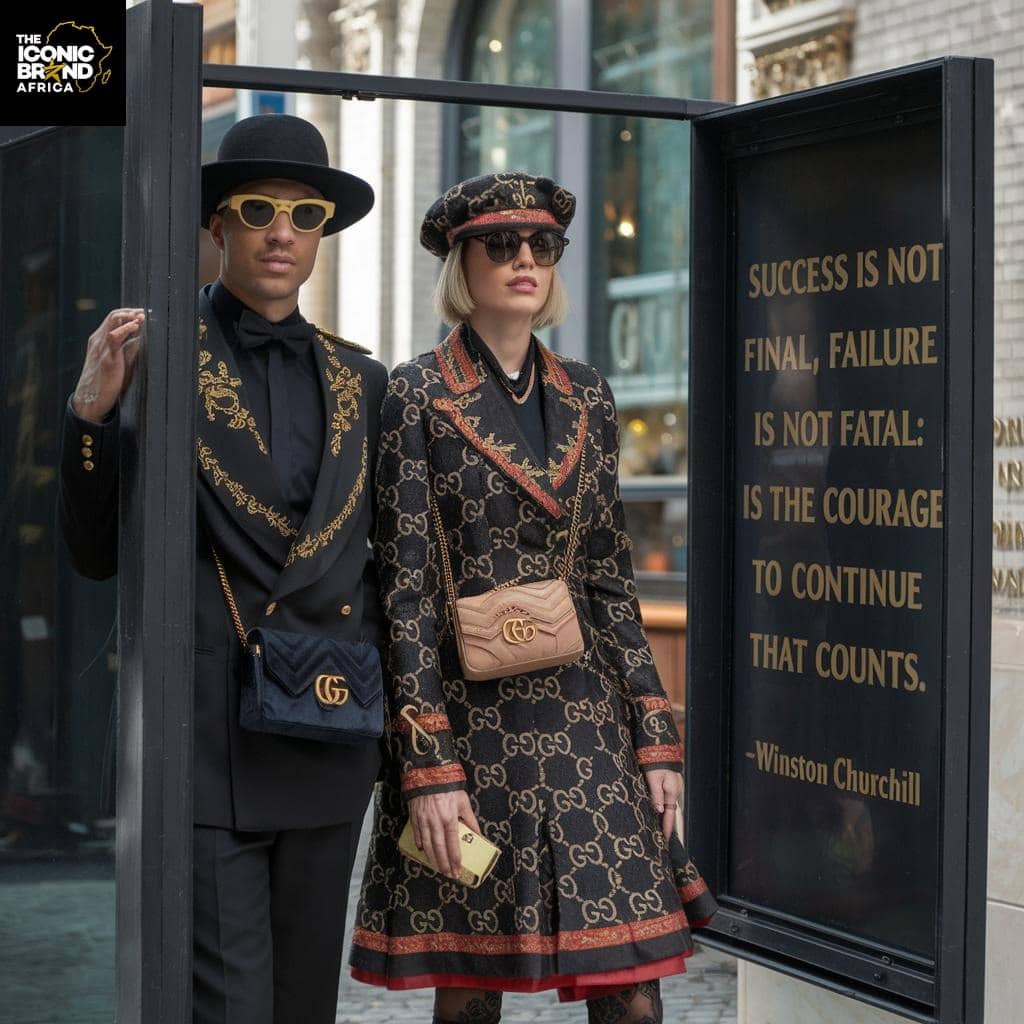𝐈𝐦𝐩𝐨𝐫𝐭𝐚𝐧𝐭 𝐋𝐞𝐬𝐬𝐨𝐧𝐬 𝐭𝐨 𝐋𝐞𝐚𝐫𝐧 from the Rise and Fall of o𝐧𝐞 𝐨𝐟 𝐭𝐡𝐞 𝐅𝐚𝐬𝐡𝐢𝐨𝐧 𝐈𝐧𝐝𝐮𝐬𝐭𝐫𝐲 𝐅𝐨𝐮𝐧𝐝𝐞𝐝 𝐢𝐧 𝐭𝐡𝐞 𝐲𝐞𝐚r 𝟏𝟗𝟐𝟏 𝐢𝐧 𝐓𝐮𝐬𝐜𝐚𝐧𝐲, 𝐈𝐭𝐚𝐥𝐲.
𝐓𝐡𝐞 Rise Of Gucci Products
Gucci was once a dominant force in the fashion industry, known for its luxurious and sophisticated products that were coveted by the elite. The glory days of Gucci can be traced back to the 1990s and early 2000s, when its iconic double-G logo became a symbol of status and wealth. The fashion house was at its peak of popularity and influence.
Under the creative direction of Tom Ford, Gucci underwent a major transformation, becoming synonymous with luxury, glamour, and sex appeal. During this time, Gucci became the go-to brand for celebrities, with A-listers like Madonna, Gwyneth Paltrow, and Jennifer Lopez regularly wearing Gucci on the red carpet. The brand’s iconic horsebit loafers, logo belts, and bamboo-handled bags became must-have items for fashion insiders and trendsetters.
The brand’s runway shows were also highly anticipated events, with Ford’s collections pushing boundaries and setting new trends in the fashion industry. Gucci’s marketing campaigns, often featured provocative imagery, and celebrities like Kate Moss, further solidified the brand’s status as a cultural phenomenon.
In addition to its success in the fashion world, Gucci also experienced financial growth during this period, with sales soaring and the brand expanding globally. Truly, the glory days of Gucci were marked by creativity, innovation, and a sense of daring that captivated consumers and cemented the brand’s place in fashion history.
𝐓𝐡𝐞 𝐅𝐚𝐥𝐥 Of Gucci Products
Once a dominant force in the fashion industry, Gucci experienced a significant fall from grace which can be largely attributed to a series of missteps, including controversial designs, diluted brand image, and financial struggles.
One of the major factors which contributed to Gucci’s downfall was the departure of the creative director, Tom Ford in 2004. Ford had been instrumental in revitalizing the brand and propelling it to international success during his tenure. Without his innovative designs and vision, Gucci struggled to maintain its relevance in the competitive fashion world.
Gucci also faced backlash for several controversial designs, such as a collection featuring racist imagery and a series of “knockoff” handbags that led to legal disputes with other designers. These missteps tarnished the brand’s reputation and alienated customers.
Furthermore, Gucci’s rapid expansion into other product categories, such as home goods and fragrances, led to a dilution of its luxury brand image. The brand began to lose its exclusivity and appeal to its core audience, causing a decline in sales and profits.
Financial troubles also plagued Gucci during this time, the brand struggled to turn a profit and faced increased competition from other luxury fashion houses. In 2009, the company reported a significant decline in sales and underwent a restructuring process to streamline operations and cut costs.
Despite its fall from prominence, Gucci was able to stage a remarkable comeback in the following years under the leadership of another creative director, Alessandro Michele. Michele brought fresh perspective and innovative designs to the brand, revitalizing its image and restoring its status as a fashion powerhouse.
Today, Gucci is once again one of the most coveted and iconic luxury brands in the world, showcasing the brand’s resilience and ability to adapt and evolve in the ever-changing fashion landscape.
𝐋𝐞𝐬𝐬𝐨𝐧𝐬 O𝐭𝐡𝐞𝐫 𝐁𝐫𝐚𝐧𝐝𝐬 𝐜𝐚𝐧 𝐋𝐞𝐚𝐫𝐧 𝐟𝐫𝐨𝐦 𝐭𝐡𝐞 𝐑𝐢𝐬𝐞 and 𝐅𝐚𝐥𝐥, 𝐚𝐧𝐝 𝐁𝐚𝐜𝐤 𝐭𝐨 𝐑𝐢𝐬𝐞 𝐨𝐟 𝐆𝐮𝐜𝐜𝐢 Products
Other luxury brands can learn the following important lessons from the rise and fall of Gucci products.
1. It is crucial for brands to stay relevant and adapt to changing consumer preferences. Innovation and creativity are key in the fast-paced world of fashion, and brands must constantly evolve to stay ahead of the curve.
2. Brands should prioritize transparency and authenticity, as consumers are increasingly drawn to brands with a strong ethical and sustainable ethos.
3. Failure is never the end of life. A fallen brand can rise again when it meets the right people needed to post and polish its products and reputation.
𝐂𝐨𝐧𝐜𝐥𝐮𝐬𝐢𝐨𝐧 on the Rise and Fall of Gucci Products
The story of Gucci serves as a cautionary tale for other luxury brands, highlighting the importance of staying true to one’s roots, while also embracing change and innovation. By learning from Gucci’s mistakes, brands can avoid the same fate of falling from dominance to obscurity.
